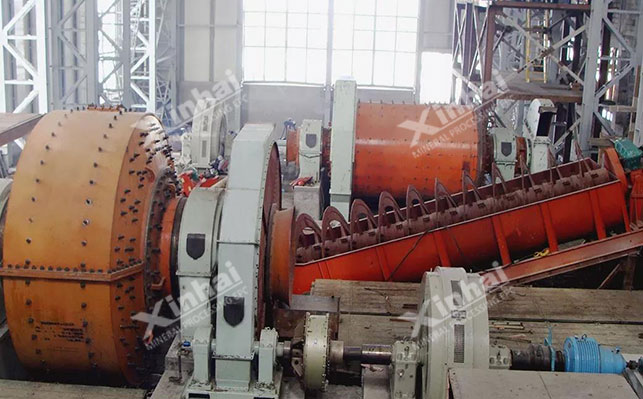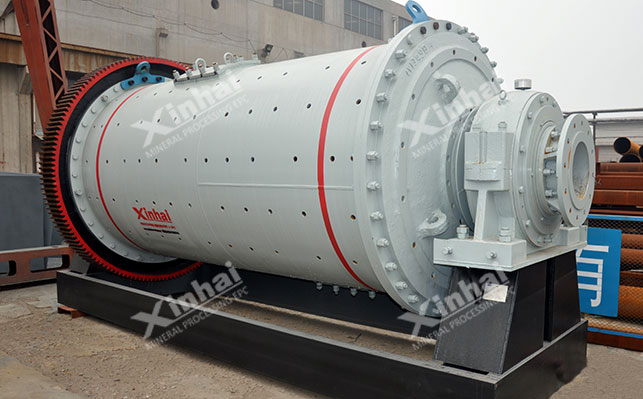In the process of mineral resource development, the grinding process is a key step in improving mineral recovery and reducing production costs. For large beneficiation plants, selecting suitable grinding equipment is crucial. At present, the main grinding equipment on the market includes semi autogenous grinding (SAG) and ball mills (BM). This article will provide a detailed comparative analysis of these two types of equipment to help mineral processing plants make more reasonable equipment choices.

A semi autogenous grinding is a device that uses ore itself as a grinding medium to achieve crushing through the collision and grinding between ores. Its working principle is to use a large rotating cylinder to make the ore and a small amount of steel balls or bars move together, producing high-efficiency grinding effect.
High production efficiency: The semi autogenous mill has a large processing capacity and strong adaptability, especially suitable for processing ores with high hardness and large particle size.
Relatively low energy consumption: Compared with traditional ball mills, semi autogenous mills have lower energy consumption during the grinding process, especially when processing harder ores.
Simplify the process: The semi autogenous mill can omit some crushing processes and simplify the entire beneficiation process.
A ball mill is a device that uses steel balls as grinding media to impact and grind ores inside the cylinder. The working principle is that the ore is fed into a rotating cylinder, and as the cylinder rotates, the steel ball is lifted to a certain height and freely falls down to impact and grind the ore.
Wide applicability: The ball mill is suitable for ores of various hardness, especially for softer ores, and the grinding effect is more ideal.
Fine product particle size: Ball mills can grind finer product particle sizes, which helps improve mineral flotation or chemical treatment efficiency.
Flexible operation: The operating parameters of the ball mill are easy to adjust and can be flexibly adjusted according to production needs.
Due to its design, the semi autogenous mill can process a large amount of ore, with a single series processing capacity of up to 50000 tons per day. This large-scale processing capability makes semi autogenous mills very popular in large beneficiation plants. A semi autogenous mill is particularly suitable for processing ores with high hardness, as it can use ores as grinding media and reduce reliance on steel balls.
Ball mills are known for their fine grinding ability and are suitable for mineral processing processes that require finer product particle sizes. The ball mill can adjust the steel ball filling rate and cylinder speed to adapt to ores of different hardness and particle size. However, the processing capacity of ball mills is usually lower than that of semi autogenous mills, making them suitable for medium-sized beneficiation plants.

According to practical application cases, the unit installed power consumption (Kw. h/t) of a semi autogenous mill is usually between 7.25 and 10.05. This energy consumption level is relatively low, especially considering its processing capacity.
The energy consumption of ball mills is relatively high, especially when grinding harder ores. The unit installed power consumption (Kw. h/t) is usually between 9.30 and 12.18.
When selecting grinding equipment for large-scale beneficiation plants, comprehensive consideration should be given to the properties of the ore, production scale, energy consumption requirements, and investment costs. A semi autogenous mill is suitable for mineral processing plants with high hardness and large scale, while a ball mill is suitable for applications that require finer product particle size. With the continuous optimization of SABC grinding process, the combination of semi autogenous mill and ball mill can further improve production efficiency and reduce energy consumption. The beneficiation plant should conduct a detailed technical and economic analysis based on its actual situation, and select more suitable grinding equipment.